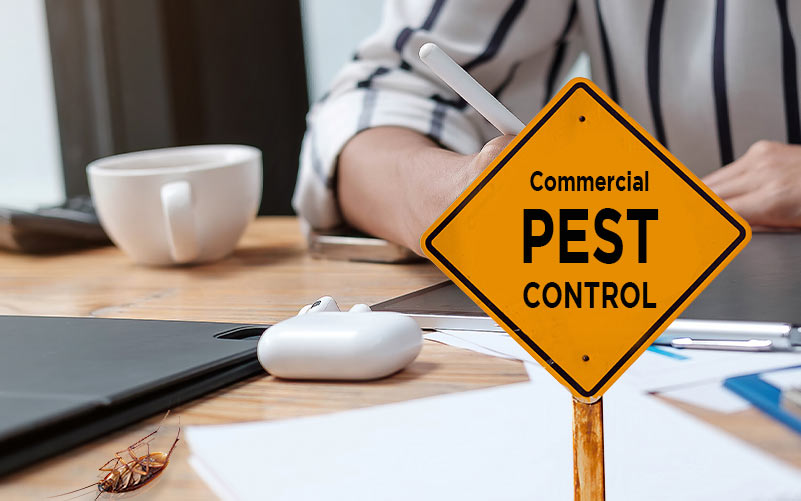Trusted A1 Bed Bug Exterminator Charlotte - Get Rid of Bed Bugs Quick
Bed Pest Treatment Failure: Comparing Chemical Vs. Non-Chemical Solutions
In the realm of bug control, particularly when managing the relentless issue of bed pests, the choice between chemical and non-chemical therapy options can be a crucial one. Both techniques offer distinct benefits and downsides, affecting factors such as efficiency, safety factors to consider, and total cost. By analyzing the nuanced details of each approach, a clearer understanding of which path to pursue in attending to a bed bug invasion can be acquired.
Performance of Chemical Therapies
Chemical treatments for bed pest infestations have been widely recognized for their powerful and quick efficiency in getting rid of these insects. When taking into consideration the performance of chemical therapies, it is essential to comprehend that they can give a comprehensive and fast solution to a bed insect issue. Expert pest control men often depend on insecticides to target bed insects at different stages of their life cycle, including nymphs, grownups, and eggs. These chemicals generally function by interfering with the bed pests' anxious system, resulting in paralysis and eventual death.
In addition, chemical treatments have the benefit of offering recurring effects, suggesting that they can continue to remove bed pests even after the first application. This residual activity is specifically useful in combating any type of potential re-infestations. Furthermore, the quick activity of chemical therapies can bring relief to people facing serious bed pest invasions, permitting them to restore control of their space quickly.
Safety Interest In Chemical Solutions
One vital aspect that calls for careful consideration when utilizing chemical options for bed bug therapy is ensuring the safety and security of owners and the atmosphere. Direct exposure to specific chemicals utilized in bed bug therapies can lead to respiratory problems, skin inflammation, or other negative responses, especially in individuals with pre-existing conditions or level of sensitivities.
Additionally, the ecological effect of chemical services is another considerable factor to consider. Some pesticides used in bed bug treatments might be damaging to advantageous bugs, wildlife, and ecological communities if they leach into the dirt or water systems. It is vital to utilize chemical therapies judiciously, complying with security standards, and taking into consideration much less poisonous alternatives to alleviate these threats and guarantee the effective and risk-free monitoring of bed bug infestations.
Benefits of Non-Chemical Approaches
Taking into consideration the potential security worries and ecological impact connected with chemical options for bed pest therapy, exploring non-chemical strategies offers a promising alternative with several unique advantages. Non-chemical methods offer a safer option for families, specifically those with individuals, children, or animals delicate to extreme chemicals. These techniques eliminate the risks of exposure to poisonous materials, minimizing the possibility for adverse wellness impacts. In addition, non-chemical therapies are environmentally friendly, as they do not contribute to air or water air pollution, making them a lasting selection for pest control.
In addition, non-chemical services can be effective in targeting bed pests, including hard-to-reach areas where chemical therapies might not penetrate. Approaches such as heat treatment, vacuuming, steam cleaning, and cushion encasements give complete obliteration without using harmful chemicals. Additionally, non-chemical approaches can be less turbulent, requiring very little prep work and permitting quicker reentry right into dealt with areas. On the whole, choosing non-chemical bed insect treatment techniques not just prioritizes safety and security and environmental defense but likewise ensures comprehensive and efficient bug control.
Limitations of Non-Chemical Treatments

Furthermore, non-chemical therapies typically need several applications to attain successful obliteration. This can be taxing and might not always guarantee total elimination of all bed bugs and their eggs, specifically in covert or hard-to-reach areas.
Additionally, the success of non-chemical therapies greatly depends on proper execution and thoroughness, which can be challenging for individuals without expert knowledge. Insufficient application of non-chemical methods might lead to insufficient obliteration, leading to persistent problems and the demand for added therapies.
Therefore, while non-chemical treatments have their benefits, it is necessary to acknowledge these restrictions and consider them when establishing one of the most reliable method for handling bed insect infestations.
Expense Comparison: Chemical Vs. Non-Chemical Options
Provided the constraints connected with non-chemical therapies, an important aspect to examine in the context of bed bug administration is the price comparison in between chemical and non-chemical options. In contrast, non-chemical therapies like heat treatment or heavy steam can be much more expensive, with costs ranging from $1,000 helpful hints to $6,000 for a whole home. While the first expense of chemical therapies might seem lower, several treatments may be needed to totally eliminate the invasion, potentially raising the overall expense.
Verdict

Taking into consideration the find more potential security worries and ecological influence connected with chemical options for bed insect treatment, checking out non-chemical strategies offers a promising option with a number of distinctive advantages.Offered the limitations connected with non-chemical therapies, a crucial element to examine in the context of bed bug administration is the price contrast in between chemical and non-chemical alternatives. In comparison, non-chemical treatments like warm therapy or vapor can be extra expensive, with costs ranging from $1,000 to $6,000 for an entire home. While the preliminary price of chemical therapies might seem reduced, several treatments may be needed to completely get rid of the infestation, potentially increasing the overall cost.In conclusion, when contrasting chemical and non-chemical bed bed bug eradication pest therapy alternatives, it is vital to think about efficiency, safety and security, advantages, limitations, and expense.